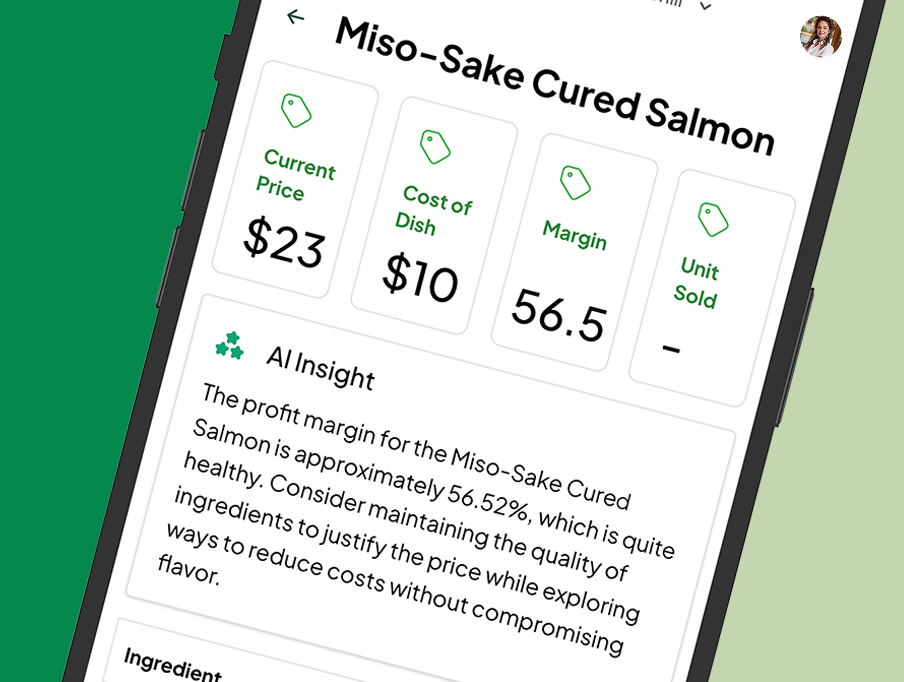In the highly competitive restaurant industry, staying ahead requires more than just exceptional cuisine and ambiance. It demands data-driven decisions that optimize operations and maximize profitability. Real-time menu analysis has emerged as a game-changing tool for restaurant owners, enabling them to adjust offerings and improve P&L outcomes dynamically.
Why Real-Time Menu Analysis Matters in Today’s Competitive Market
The restaurant landscape is ever-evolving, with shifting consumer preferences, fluctuating ingredient costs, and intense competition. Traditional menu planning methods often rely on historical data and intuition, which can lead to missed opportunities and inefficiencies.
Key Challenges Facing Restaurants Today
- Rising Ingredient Costs: Fluctuations in supply chains can drastically affect profit margins.
- Menu Profitability: Not all menu items contribute equally to the bottom line.
- Lack of Data-Driven Decisions: Decisions based on gut feelings rather than real-time data can hinder growth.
The Competitive Edge of Real-Time Analysis
By leveraging real-time data, restaurants can:
- Optimize Menu Offerings: Identify and promote high-margin items.
- Adjust Pricing Strategically: Implement dynamic pricing to reflect current market conditions.
- Enhance Customer Satisfaction: Tailor offerings to meet current customer preferences.
Embracing Technology
The integration of menu engineering and recipe costing software allows for a more precise and responsive approach to menu management.
Aligning Menu Adjustments with Real-Time Ingredient Costs
Ingredient costs can be volatile due to seasonality, supply chain disruptions, or market demand. Aligning menu adjustments with these real-time costs is crucial for maintaining profitability.
Understanding Ingredient Cost Fluctuations
- Seasonal Variations: Certain ingredients may be more expensive during off-seasons.
- Supply Chain Issues: Delays or shortages can spike prices unexpectedly.
- Market Demand: High demand for specific ingredients can increase costs.
Strategies for Alignment
- Dynamic Pricing Implementation
- Adjust prices based on current ingredient costs.
- Utilize dynamic pricing in restaurants to remain competitive.
- Menu Adaptation
- Introduce seasonal dishes that utilize cost-effective ingredients.
- Remove or replace items with unsustainable ingredient costs.
- Supplier Negotiations
- Build relationships with multiple suppliers to secure better pricing.
- Consider local sourcing to reduce transportation costs.
Tools for Success
- Real-Time Cost Monitoring Software: Automate tracking of ingredient prices.
- Integrated POS Systems: Sync sales data with inventory for accurate analysis.
AI-Driven Tools for Monitoring Menu Profitability
Artificial Intelligence (AI) has revolutionized how restaurants operate, providing insights that were once unattainable.
Benefits of AI in Menu Analysis
- Predictive Analytics: Forecast sales trends and customer preferences.
- Automated Reporting: Generate real-time reports on menu performance.
- Personalization: Tailor recommendations and promotions to individual customers.
Key Features to Look For
- Integration Capabilities: Seamless connection with existing systems like POS and inventory management.
- User-Friendly Interface: Easy to interpret data visualizations.
- Scalability: Adaptable to both fine dining and casual establishments.
MRGN.ai’s AI Solutions
MRGN.ai offers advanced business intelligence tools that empower restaurant owners to make informed decisions. Features include:
- Real-Time Data Analysis: Stay updated on menu performance.
- Customizable Dashboards: Focus on metrics that matter most to your business.
- Actionable Insights: Receive recommendations based on data trends.
Examples of Fine Dining vs. Casual Dining Menu Strategies
Different types of restaurants require tailored approaches to menu analysis and adjustments.
Fine Dining Restaurants
Characteristics
- High-Quality Ingredients: Emphasis on premium and often expensive ingredients.
- Unique Offerings: Exclusive dishes not found elsewhere.
- Experience-Oriented: Customers pay for ambiance and service as much as food.
Strategies
- Premium Pricing Models: Justify higher prices with exceptional quality and service.
- Seasonal Menus: Regularly update offerings to reflect the freshest ingredients.
- Limited Menu Items: Focus on perfection rather than variety.
Case Study
A fine dining restaurant utilized MRGN.ai’s tools to:
- Identify Top Performers: Highlight dishes with the highest profit margins.
- Adjust Menu Pricing: Implement dynamic pricing for special events or peak times.
- Enhance Customer Experience: Personalize recommendations based on previous visits.
Casual Dining Restaurants
Characteristics
- Affordable Pricing: Competitive pricing to attract a broader customer base.
- Diverse Menu: Wide variety of options to cater to different tastes.
- High Volume: Rely on a higher turnover of customers.
Strategies
- Promotions and Discounts: Use data to determine the best times for specials.
- Menu Simplification: Remove low-performing items to streamline operations.
- Value Engineering: Adjust portion sizes or ingredients to maintain margins without affecting customer satisfaction.
Case Study
A casual dining chain used real-time menu analysis to:
- Boost Sales: Implement time-specific promotions during slow periods.
- Reduce Waste: Identify and eliminate dishes with low sales and high spoilage rates.
- Improve Profitability: Re-engineer recipes using recipe costing software to find cost-effective alternatives.
How MRGN.ai Enhances Real-Time Menu Analysis
MRGN.ai is at the forefront of providing AI-driven solutions tailored for the restaurant industry.
Comprehensive Features
- Menu Engineering Tools: Design menus that maximize profitability.
- Real-Time Monitoring: Keep track of sales, inventory, and customer feedback instantly.
- Custom Reports: Generate reports that focus on key performance indicators.
Integration with Existing Systems
- POS Systems: Seamless data flow from sales to analysis.
- Inventory Management: Sync ingredient usage with menu performance.
- Financial Planning: Align menu decisions with broader financial goals using our financial modeling tools.
Benefits of Using MRGN.ai
- Data-Driven Decisions: Move from intuition-based to evidence-based strategies.
- Increased Profitability: Optimize menu offerings for better margins.
- Operational Efficiency: Save time with automated processes and insights.
Learn How to Integrate MRGN.ai’s Real-Time Menu Analysis for Actionable Insights
In an industry where margins are thin, and competition is fierce, leveraging technology is no longer optional—it’s essential.
Ready to transform your restaurant’s profitability with real-time menu analysis?
Book a call and learn more about MRGN.ai’s cutting-edge solutions today.
Additional Resources
- Menu Engineering: Discover how to design menus that drive sales.
- Financial Planning for Restaurants: Align your operations with financial goals.
- Business Intelligence Tools: Gain deeper insights into your restaurant’s performance.
- Dynamic Pricing Strategies: Learn how to implement pricing models that reflect real-time market conditions.
- Blog: Stay updated with the latest industry trends and tips.
For inquiries or support, feel free to contact us. Join our waitlist to stay informed about our latest offerings and integrations with platforms like Quickbooks.
We’re excited to announce that we’re working on integrating MRGN.ai with additional platforms, including: FreshBooks, Pilot, Bench, Wave, Quatrro, MarginEdge, Xero, xtraCHEF, Food Service Ace, ZipBooks, DAVO, Plate IQ
By joining our waitlist, you’ll be among the first to access MRGN.ai’s powerful tools integrated with your preferred platform.





